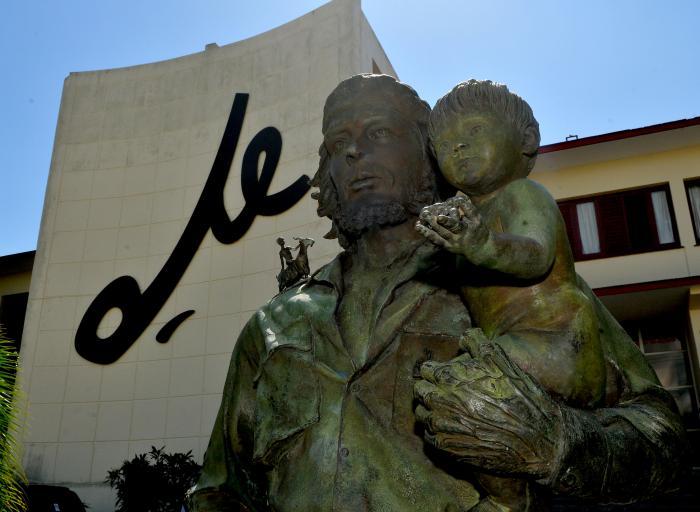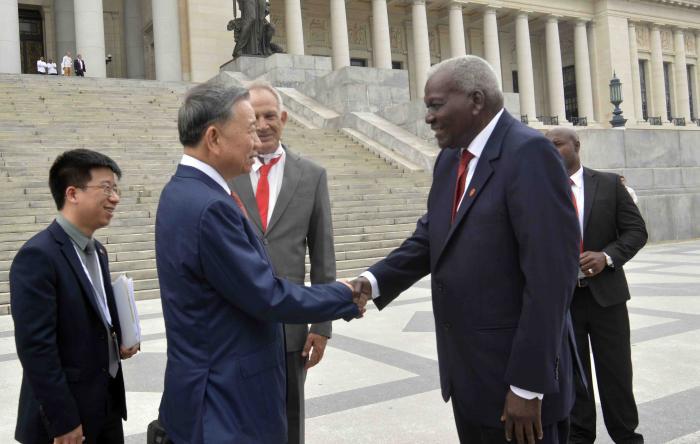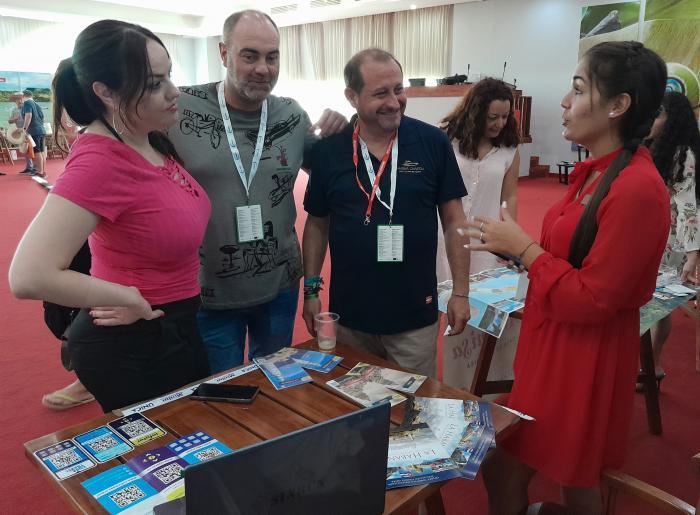

The Investigations Bureau, months before being demolished. Photo: ACRC Archive. Photo: Granma
One of the most ruthless repressive bodies of the Batista tyranny was, without a doubt, the sinister Bureau of Investigations of the Police, in whose dungeons they tortured, humiliated and murdered, mainly young revolutionaries, workers' leaders, students or simple citizens who did not support the nefarious regime that the U.S. Government supported.During the almost seven years that the Batista government remained in power, the Bureau of Investigations played a leading role in the repression against the Cuban people. The famous Fifth Police Station, which was in charge of the ferocious assassin Colonel Esteban Ventura Novo, could not keep up with his peer in the Bureau, Colonel Orlando Piedra Negueruela, who received direct advice from the FBI.The Bureau was located at 23rd and 32nd Street (today Clandestinity Martyrs Park), in a triangular-shaped building where the former 5th Military District was located. Whoever was taken there, it was said that his time in this world was numbered.To access the main entrance of the building, one had to go up a wide staircase to the hall, where the folder and the telephone board were located. Down a long corridor, to the right, you reached the group offices, Personnel and the Secretariat. On one of these walls was written: "What you hear here, what you see here, when you go home, leave it here."In the left wing were the dungeons. There was a very special one, without balusters, walled, soundproofed and with a peephole. It was used for very confidential interrogations. Further along, at the end of that corridor was the museum. Colonel Piedra's office and those of the other chiefs were on the upper floor.In the basement there were more dungeon-like cells, jealously compartmentalized, where the victims were tortured.For the Government it was very important to keep a military officer of absolute confidence in the direction of this repressive unit; that is why they placed Colonel Orlando Piedra Negueruela there. It was said that "he was Batista's golden boy"; and he was the one who prepared the Operation Escape of the tyrant and his henchmen, in the four airplanes that took off from the military airport of Columbia Camp, in the early morning of January 1st, 1959.The Bureau's main repressive group was stationed in Confidential-1, or C-1. It was in charge of developing undercover investigations into national and international political affairs, state security, and "cooperating" with foreign police forces, primarily the U.S. FBI.They also received support from C-3, which was in charge of tapping telephones and communications of suspicious persons. This "select and fearsome group" of thugs was in charge of the Bureau's dirty work: disappearing anyone.The relations of the Cuban Bureau of Investigations with the U.S. Federal Bureau of Investigations (FBI) were extensive; so much so that it had an office inside the U.S. Embassy in Havana, while the FBI had its own office on the top floor of the Bureau, next to that of the bosses, from which they trained in the use of the most sophisticated methods of interrogation and torture.A few months before the "coup d'état" took place, policeman 2167, Mario Enrique Laverde, 25 years old, began to work on the telephone board of that repressive body. But he was not just another policeman, but agent Raúl, one of the infiltrators of the Popular Socialist Party (PSP) in that gloomy police unit.His mission was to keep the Party informed and to identify the detained revolutionaries, in order to alert public opinion, their families or their organizations."There were many important matters that escaped me, because they were cooked inside the main headquarters and that of the different groups, because each one had its secrets and there were things that were only aired from the boss on up, and not even among the main thugs were the details known. The chiefs had direct telephones, the most important things came and went without going through the board, neither Colonel Piedra nor Medina nor the other chiefs ever went out to talk through the board, only the section chiefs in some cases received operational calls and, logically, they were measured to say certain things," says Laverde in the book Un topo rojo en el Buró de Investigaciones (A Red Mole in the Investigations Bureau).Benigno was Laverde's liaison with the Party. To him he had to deliver written or verbal reports, and in turn receive from him clarifications or new instructions for his missions.THE ASSASSINATION OF PELAYO CUERVOAt about 10:00 p.m. on the night of March 13, 1957, after the assault on the Presidential Palace, a black Cadillac driven by agent Elpídio García left the courtyard of the Bureau. Sergeant Rafael Gutiérrez and policeman Manuel Hernández were in the crew. Behind, as an escort, followed an Impala car, license plate 31986, of the Drug Bureau, whose driver was Santiago Linares, and as crew members were sergeant Sotero Delgado and agents Maurin Viera and J. La Rosa.They went to the Miramar neighborhood where the elderly Orthodox leader Pelayo Cuervo Navarro was hiding, and at machine gunpoint they took him away. At dawn, the cars stopped in the secluded and dark area of El Laguito, in the Country Club, where sergeant Rafael Gutiérrez, who was traveling with Pelayo, after hitting him, shot him in the chest. Then they took him out of the car and threw him on the wet grass, where they machine-gunned him.HOW WAS ECUADORIAN JOURNALIST CARLOS BASTIDAS MURDERED?In a sinister operation coordinated by the fearsome Colonel Pilar García, under the guidance of the Chief of the "Bureau", the young Ecuadorian journalist Carlos Bastidas Argüello, who had interviewed Fidel Castro in the Sierra Maestra, was also assassinated in Havana. On May 13, when he was in the Cachet bar, on Prado Street, between Virtudes and Neptuno streets, the police corporal Orlando "Gallo Ronco" Marrero, who had been assigned this "service", approached him and, without mediating words, offended him, provoked him, knocked him down with a punch and "coldly" shot him three times in the head. Due to the repercussion of the macabre act, the policeman was formally charged in a military court. But in the sham trial he was acquitted of all suspicion.After the triumph of the Revolution, Mario Enrique Laverde joined the State Security Organs (DSE), in which, to his astonishment, he recognized several of his former comrades from the Investigation Bureau.In the same year 1959, the building of the shady Bureau was demolished, where they tortured and murdered countless combatants of the clandestine struggle, among them Sergio González (El Curita), Oscar Lucero and Gerardo Abreu (Fontán), from whom the henchmen could not extract any information.





